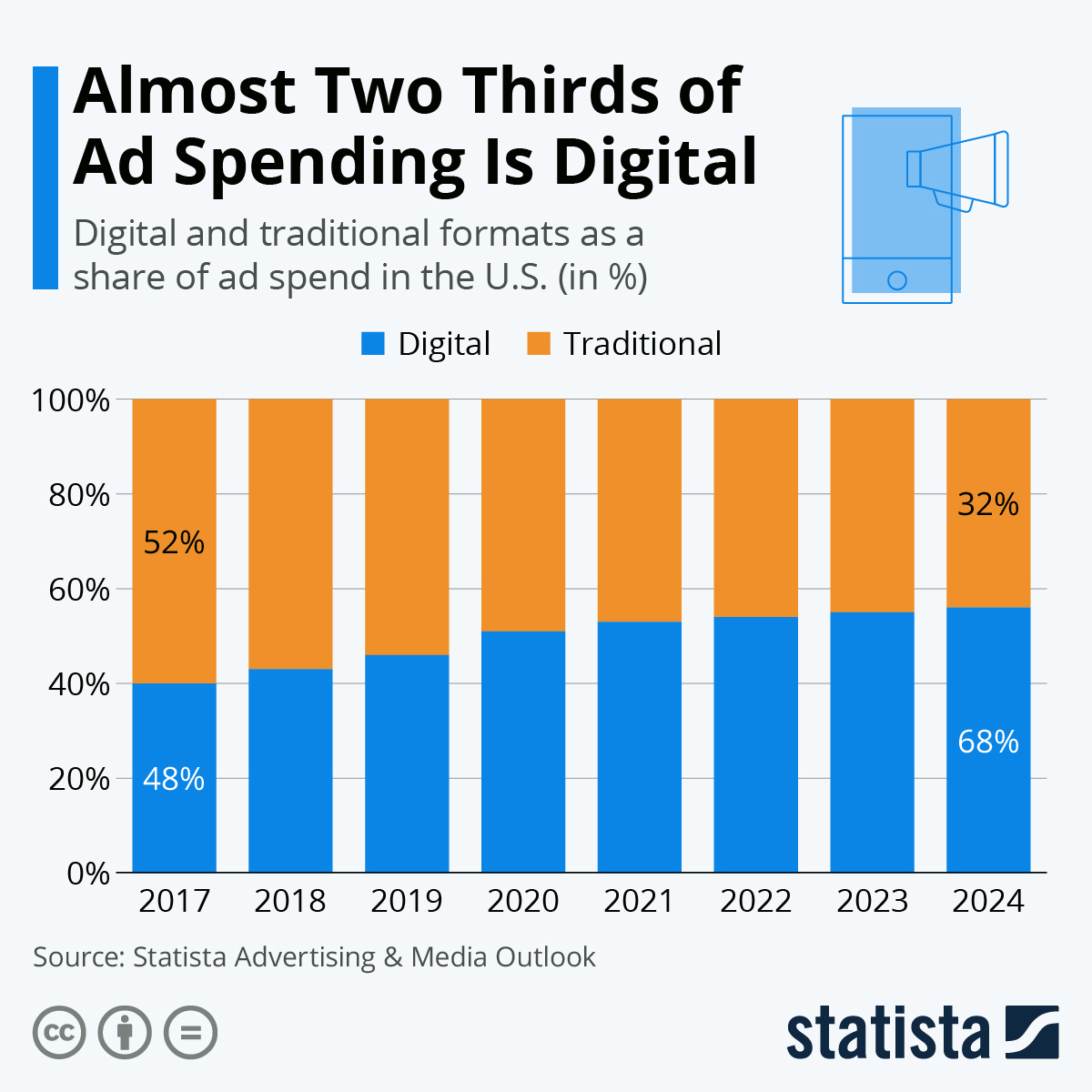Every Business Is Now A Media Business
There are several core guiding principles at the fore of the Jewish marketing and advertising campaigns we spearhead for clients. For example, we maintain a laser focus on employing only targeted and measurable ad platforms while avoiding vanity metrics at all costs. Another core principle is that as time progresses, every business is now a media business, and we, therefore, ensure clients are well situated in this regard.
What Changed
Beyond the context of business, media has gone through monumental shifts on numerous fronts in a matter of fewer than two decades. We and others continuously refer to the phenomenon as the “slowly then suddenly” changes happening in practically every category. Media is one of the starkest case studies in this regard. For centuries, anyone with a message seeking amplification had to navigate the traditional gatekeepers, first via print, then radio, and then TV; now, there are no requisite gatekeepers to message dissemination. Anyone with an internet connection and device in their pocket can reach millions around the world. Put succinctly, the power is literally in anyone’s hands to get their message out, whether it be business-related or otherwise.
Business Is Media, And Media Is Content
Businesses of years past got the word out, albeit rather ineffectively and quite costly, through the mediums of their day, whether via print, radio, or TV. Now, where new entrants can utilize media’s power at no cost or low cost, all from an internet connection, the levers of power have never been more favorable to the operator that understands how to leverage this new reality. Capitalizing on this shift starts with the maxim that every business is a media business. After all, companies have the goal of getting one message or another out, generally to generate client or other related growth. Bypassing traditional gatekeepers and directing the lifeblood of media, which is content, to the optimal audience is the key to thriving in the new media and hence new business landscape.
Regardless of the business, almost anyone selling something has much to gain from incorporating media into meeting their sales goals. We have seen some of the more obvious implement this strategy, such as Artscroll through their author interview series to the less obvious such as professional services firms employing studio-quality production for thought leadership pieces. Though, the theme carried throughout is that, when properly executed, incorporating media and creative production, whether via print video or otherwise, can pay off handsomely.
 You will find more infographics at Statista
You will find more infographics at Statista
More Noise Than Ever Makes Strategy Vital
While anyone now has the power to reach the world, a strategy to do so effectively is essential to success. After all, with practically every person having the tools and increasingly taking advantage of the new media landscape to make their voice heard, there is more content or, better put, “noise” than ever before. Standing out among the static and cultivating an audience is where the real value lies in meeting business goals.
Find Optimal Media Platforms
The starting point in forming a strategy to maximize performance from media platforms for meeting business goals is choosing the right platforms. Platforms for content amplification come in all shapes and sizes. Some of the most obvious are social media channels such as Twitter, Facebook, Instagram, and LinkedIn. Among multiple other possible mediums, a business’ website also falls squarely among content distribution tools.
The analysis for which platforms to employ will depend for the most part on the kind of business and the optimal audience profiles of the customers they are trying to reach. Beyond knowing the specifics of a company, understanding platform strengths and weaknesses are vital to making the right decision. Absent unique circumstances, it is generally wise to focus on two or three platforms and do it well in terms of quality and posting cadence versus being on every platform, thereby compromising on performance.
Know Your Audience
Beyond the need to know the optimal audience one is trying to reach for deciding which platforms to pursue, it is also integral for content style direction. Being aware of the kind of content that potential customers want and what will drive purchases, leads, or other goal completions ensures that maximal results are possible. For example, for a retail offering, products and playful language will be the core focus. Simultaneously, for a professional services firm, there should be a heavy focus on in-depth thought leadership.
Amplification Is The Real Value Driver
Even where a business navigates platform choice and content style astutely, a missing piece of the puzzle is often amplification as it drives the most significant value. Unless a company has an existing engaged audience already paying attention to their content on social media or someplace else, it is necessary to put power behind amplifying said content. After all, social media platforms are increasingly becoming walled gardens. Without actually pushing posts and other media to the desired audience, there is often no substantial audience paying attention leading to wasted spend on content production.
There are numerous ways to ensure that the optimal audience for your business sees the content you create. The most efficient in terms of both costs and effectiveness is via targeted digital ads on the likes of Facebook, Instagram, and Google. It is important to stress that we are not referencing boosted or promoted posts, which are lacking in numerous regards, especially regarding more limited targeting capabilities. For example, for a company that has created an in-depth post about a product or service they offer, they may utilize search ads for related terms as well as form an affinity-based marketing mix via Facebook. Also, utilizing distribution tools such as Buffer or Hootsuite for streamlined posting on numerous channels without performing each individually also drives better performance.
Recycling Content Increases Returns & Analytics For Insight
Especially relevant to more expensive pieces of content, most common among players in the B2B context, such as ebooks, reports, and research, gaining maximal value is essential. Aside from amplification, recycling such media assets by turning them into additional content extends the returns. For instance, a company might release an ebook discussing the state of their respective market to generate leads. Beyond just offering the asset via a lead magnet on their website, they may repurpose content from the report and post excerpts on social channels. These additional use cases allow for any resources expended to create the content to see even more mileage. Also, incorporating analytics to get insights on which content is getting viewed and shared the most adds an additional layer of performance enablement.
The Need To Be Ready To Pivot
In the landscape of media platforms, whether it be the social media platforms of the day or the continually and swiftly evolving suite of tools and best practices, the theme has always been one of change and dynamism. A great example is the meteoric rise of TikTok, where over two years, the platform went from a relatively unknown quantity to one where teens spend an exorbitant amount of time. To reinforce our previous point, though TikTok is of exceptional value to some businesses, it should not become a focus automatically. Understanding who the and what kind of content the platform caters to is always integral to analyzing whether resources should be allocated accordingly.


